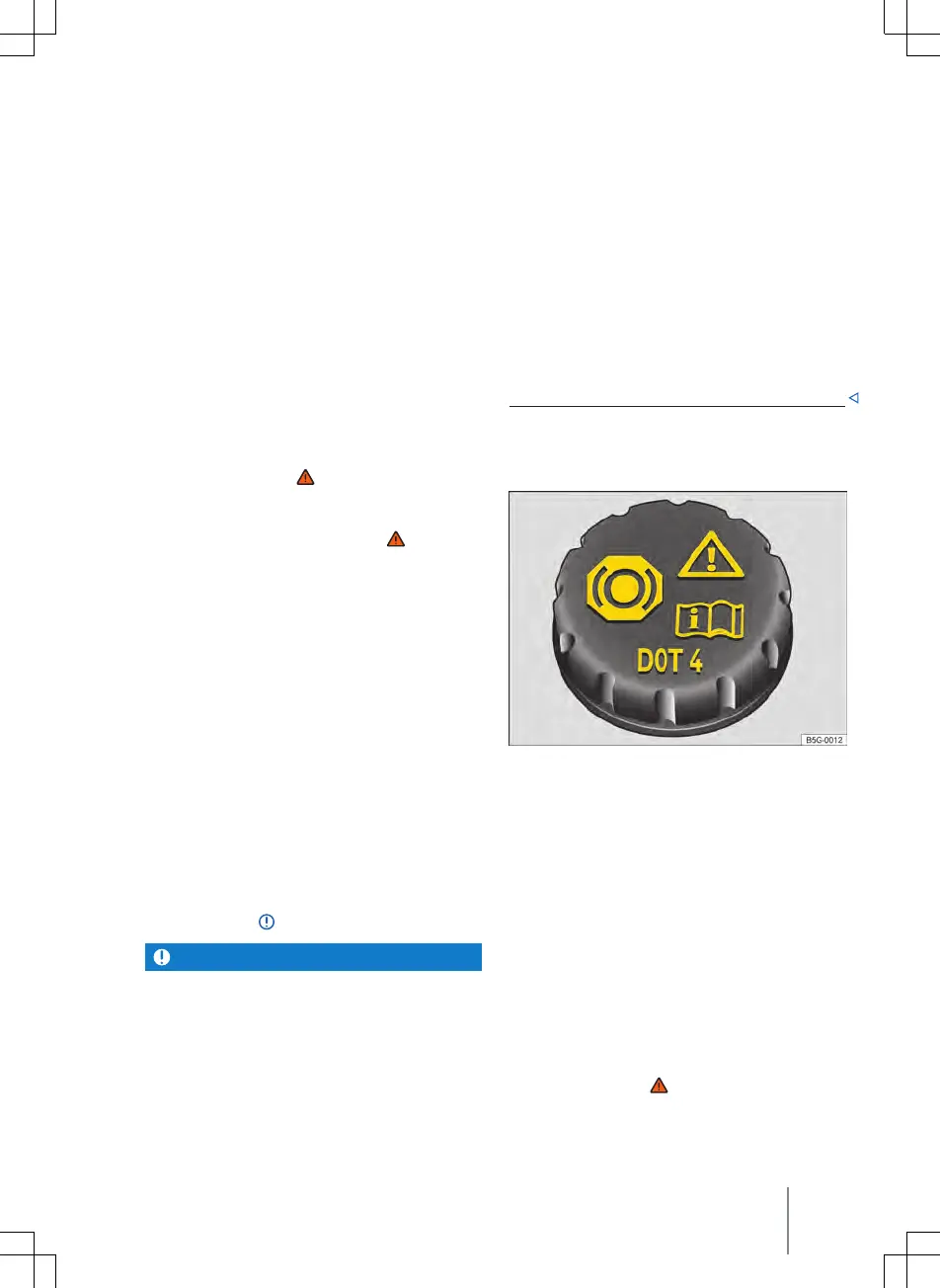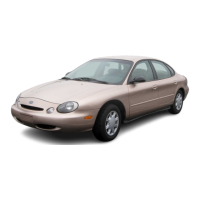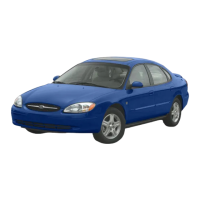The engine coolant may be above the
marked area when a new vehicle is deliv-
ered. T
his is normal. The coolant does not
have to be sucked o.
1. When the engine is cold, check the
coolant level at the side markings of the
coolant expansion tank → Fig. 200.
The coolant level must be between the
markings.
2. Refill coolant if the liquid level in the
coolant expansion tank is below the
minimum marking (“min”).
When the engine is warm, the engine
coolant level may be slightly above the
upper mark.
3. Do not add coolant if there is no longer
any coolant visible in the coolant ex-
pansion tank →
.
R
elling coolant
1. Unscrew the lid carefully →
.
2.
Only refill with new coolant that is com-
pliant with the specifications
→ page 321.
3. Add coolant up to the upper level mark-
ing.
4. The coolant level must be between the
markings on the coolant expansion
tank → Fig. 200.
5. Close the cap tightly.
6. Check the coolant level aer one day.
7. If the level drops below the minimum
marking “min” again, visit a correspond-
ingly qualified workshop and have the
cooling system checked.
8. If in an emergency you do not have ac-
cess to coolant with the required speci-
fication, do not use any other coolant
additive →
.
NOTICE
·
Do not fill c
oolant above the top edge of
the marked area. Otherwise the excess
coolant will be pressed out of the cooling
system when the engine is hot and could
cause damage.
·
If in an emergency you do not have ac-
cess to coolant in the required specifica-
tion, add only distilled water initially.
Then have the correct mixture ratio with
the coolant additive restored by a corre-
spondingly qualified workshop as soon
as possible.
·
Do not top up with coolant if there is no
more coolant in the coolant expansion
tank! Air could have entered the cooling
system. Do not drive on. Seek qualified
professional assistance. Failure to do so
can result in engine damage.
·
When refilling service fluids, ensure that
you pour the correct service fluids into
the correct openings. The use of incorrect
service fluids could result in serious mal-
functions and engine damage.
Brake uid
Fig. 201 In the engine c
ompartment: cap on
the brake fluid container
Brake fluid will gradually absorb water
from the surrounding air over the course of
time. The brake system will be damaged if
there is too much water in the brake fluid.
The boiling point of the brake fluid is also
considerably reduced by the water content.
Heavy use of the brakes may cause a va-
pour lock in the brake system if the water
content is too high. Vapour locks reduce
braking eciency, considerably increase
braking distance and can cause the brake
system to fail completely. Your own safety
and that of other road users depends on
having a brake system that functions prop-
erly at all times →
.
Brake fluid 323
2KF012720AB

